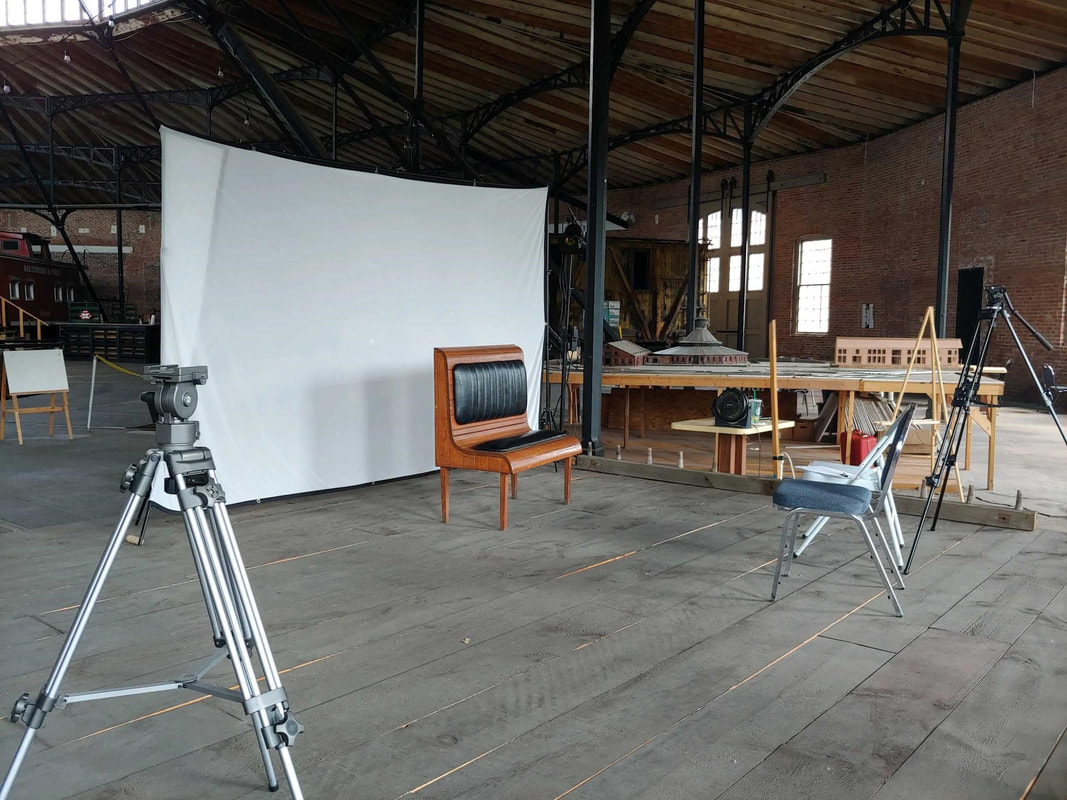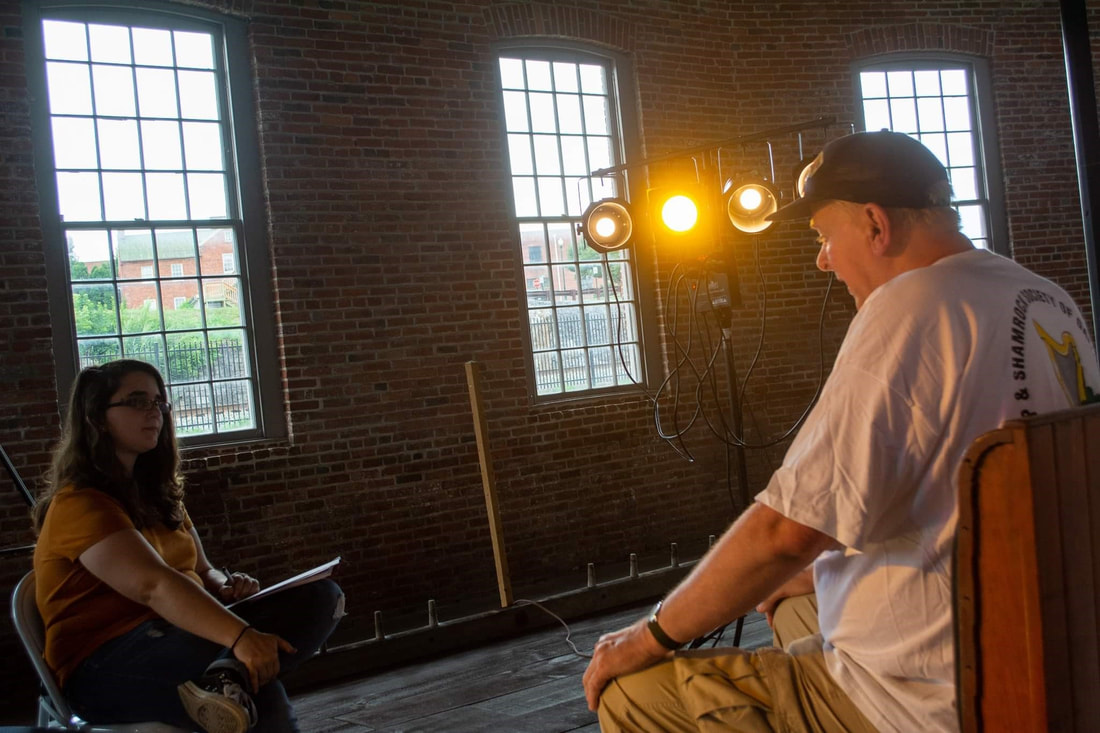|
For the past twenty years, the Martinsburg Roundhouse has been under renovation. This has included the installation of new roofing and windows, a fire suppressant system, and the construction of bathrooms. There are many projects in development with the aim of improvement and preservation yet the goal remains clear: a rebirth of the Martinsburg Roundhouse, for it to serve a new role in the community. This place once so vital for the city, for the Baltimore and Ohio Railroad Company, and the state of West Virginia has been reduced to a mysterious structure for Martinsburg citizens. Many people have largely ignored the roundhouse since it was shut down in May of 1987, a situation exacerbated by the onset of the COVID-19 pandemic. Multitudes of the festivals and shows have been canceled, and only a small number of visitors have gone on tours throughout this summer. During my service at the Martinsburg Roundhouse, I wanted to strategize a way to share the history and significance of the Martinsburg Roundhouse with a broader audience, but I especially wanted to show local people why this site mattered. The best way I thought that this story could be spread was through the schools in Berkeley County. The West Virginia history curriculum requires state and local history lessons, primarily in grades four and eight. The history of the Martinsburg Roundhouse is relevant to several historical topics: industrialization, the Civil War, and labor history in West Virginia. Yet the project has evolved from simply being a virtual tour of the site. I have had the opportunity to collaborate with a great videographer, Ronald, on this project. Ronald has helped me develop the project beyond my original idea into a more expansive one: a full-length documentary of the site. A crucial part of the documentary project has been oral history interviews. Interviewees for the video have been local historians, past employees of the roundhouse, and their family members. These interviews have illuminated and captured the history of the site, as well as serve to demonstrate the site’s importance to individuals and the community. Two key questions that have helped me to understand the feelings people have for the Martinsburg Roundhouse and why they are invested in the landmark’s future. One of the questions we’ve been asking when talking with past employees is “What did you enjoy about working at the Roundhouse?” For Chief Clerk Jim Rickard and laborer Donnie Castleman, the answer was the same: the people. This answer shows that these men had, and still have, a sense of comradery and that they are proud of the work that they did at the Martinsburg Roundhouse. The other key question that we’ve been asking all interviewees and the question we usually end the interview with is, “What the roundhouse means to you?” The employees of the Martinsburg Roundhouse and family members of employees had a similar answer to the question, that to them the roundhouse meant their livelihood. This answer reveals an essential element of what makes the roundhouse special, that this place and this industry-supported Martinsburg. I think these answers would be surprising for those who view the Roundhouse as merely a collection of vast and empty buildings. Yet for the people who worked there and their families of those who worked there it meant putting food on the table and paying the bills. It meant spending time with and growing to know people who were dedicated to the job. All interviewees have a singular vision of what they want for the site that means so much to them: that it has to be revitalized and needs to become central to the community again. How the roundhouse fulfills that role and place once again is still in question yet the ideas include the building of an amphitheater, a venue space, and the addition of a formal museum space. Each of these ideas seek to honor the history of the Martinsburg Roundhouse while simultaneously meeting the needs of Martinsburg. The documentary is still in production. The oral history interviews will conclude on September 22 and we will begin the editing phase of this project. It will take an estimated eight months for the footage to be edited and for the film to be completed. In addition to the documentary, the virtual tour is still being made. We will be utilizing the same footage, yet the narration will be tailored toward kids. There will be worksheets provided for grades kindergarten to twelfth grade along with the tour. As it stands the intention is to sell the documentary in the Martinsburg Roundhouse gift shop, as well as to play sections of it at the beginning of tours and Roundhouse events. Yet I ultimately hope that it uncovers for the people of Martinsburg and students across Berkeley County the magic of the Martinsburg Roundhouse Claire TryonClaire served as the Preserve WV AmeriCorps Member for the Martinsburg Roundhouse during the 2019-2020 program year. Comments are closed.
|
Preserve WV StoriesCategories
All
Archives
August 2023
|
Get Involved |
Programs |
Contact UsPreservation Alliance of West Virginia
421 Davis Avenue, #4 | Elkins, WV 26241 Email: [email protected] Phone: 304-345-6005 |
Organizational Partners:
© COPYRIGHT 2022 - PRESERVATION ALLIANCE OF WEST VIRGINIA. ALL RIGHTS RESERVED.





 RSS Feed
RSS Feed



